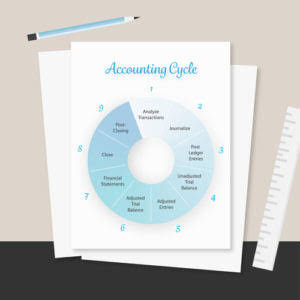Accounting and Consulting Services for Wineries, Vineyards
by baraknew
It’s ideal to establish departments that correspond to the natural flow of the winemaking process. In the wine industry, a suggested best practice in accounting for COGS is to follow U.S. This is particularly true for larger wineries, which often must adhere to U.S.
- First, wines could be kept in storage for more than one year, so you have to allocate costs not just to several types of wine, but also to several vintages of each varietal.
- The next step is to create internal reporting protocols to appropriately record COGP and develop a process and rationale for costs to be assigned to specific lots or blends and allocated between departments.
- The winery should have a rolling five-year financial model to estimate future revenue growth and the capital expenditures and labor cost structure needed to along with the cash flow necessary to support that growth.
- Winery Accounting & Compliance Co. offers complete bookkeeping, payroll and compliance services to wineries and many other types of businesses throughout Napa and Sonoma Valley.
- Protea Financial is here to help you understand the basics of wine accounting so that you can make informed decisions about your business.
Getting bogged down or lost trying to handle it all in-house is a recipe for subpar growth, or worse. Even with accurate cost of production information, winery operators must have a thorough record of the inventory quantities on hand at each stage of production in order to properly apply costs. Therefore, one of the most critical processes for a winery to have in place is an effective inventory count system. This includes both manual counting as well as automated perpetual inventory tracking systems. Contra-accounts are useful because they enable users to preserve the historical value in a main account, while offsetting that historic value in full or in part for a particular reason. For example, a reason might be to show the net difference—also known as book value—or to allocate costs from a production cost center to wine inventory on the balance sheet.
Transactions
Accounting, at its foundation, is a process of organizing financial information. Transaction-level data is sorted into bigger buckets so that the information can be summarized and reported on in an organized and logical manner. While some may argue for expensing production costs for tax benefits, it’s vital to maintain a separate accounting set for management purposes following Generally Accepted Accounting Principles (GAAP). Every employee’s wages, benefits, and payroll taxes must be accounted for and apportioned. If you operate a vineyard in addition to winery, include those labor expenses in your total labor cost. There are several ways to allocate costs, but regardless of the method used, it’s important to apply it consistently.

Management should also consider who will be using the financial statements. Besides the management team, users of the financial statements might also include a board of directors or board of advisors, investors, lenders, vendors, and potential wine accounting investors or acquirers. When making a decision on what level of service you want an independent CPA firm to provide, you need to understand the level of assurance that comes with each type of engagement and the resulting report.
Set up the Ledger to Categorize Costs
The next step is bottling, which involves filling the bottles and adding labels and a cork or a screw-top cap. And finally, the bottles are left in storage for a period of months for further aging. Of these four steps, the crush and bottling phases are quite short, while the other two can be very long. Their outstanding team works fast and has the soft skills needed in this business, and their efficiency and attention to detail mean I can relax and do what I love. Knowing the COGS is essential if you want to know the gross profits you earn on different wines. You can take the price of a sold bottle and subtract the COGS to determine the gross profit you earned.

Recommended Posts
Times Interest Earned Ratio: What It Is, How to Calculate TIE
August 30, 2021
What is the normal balance?
April 2, 2021


